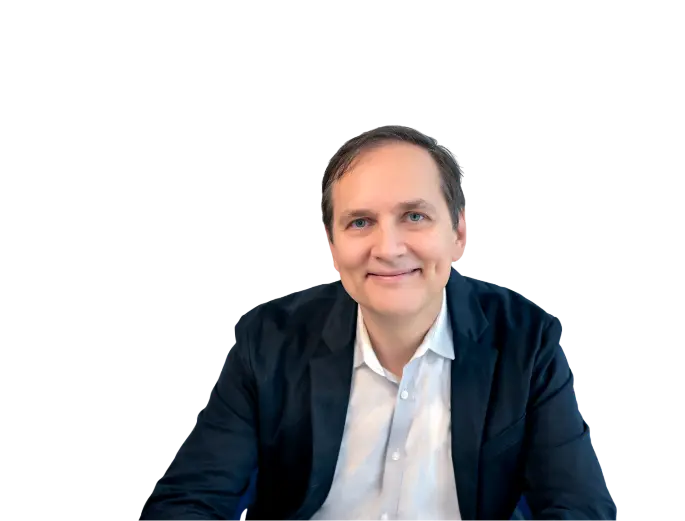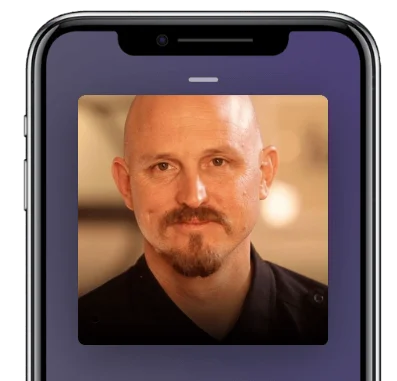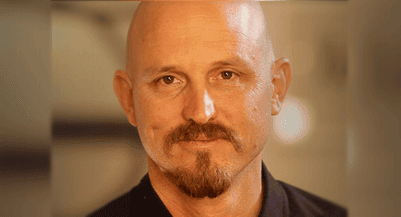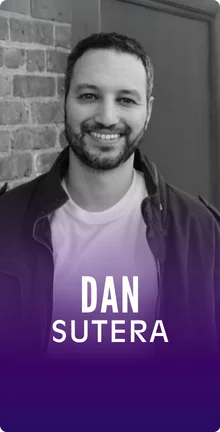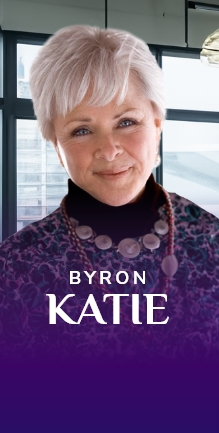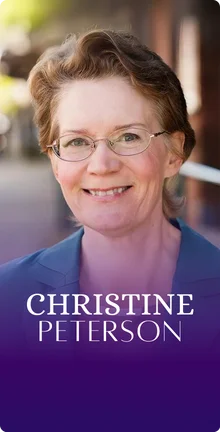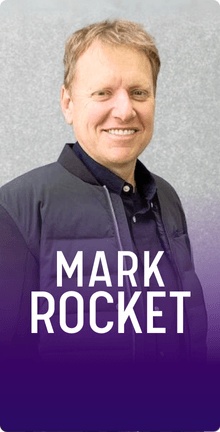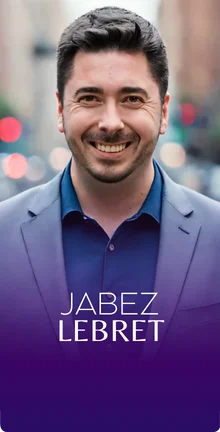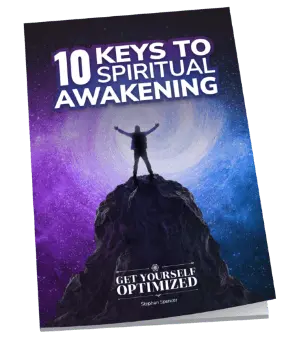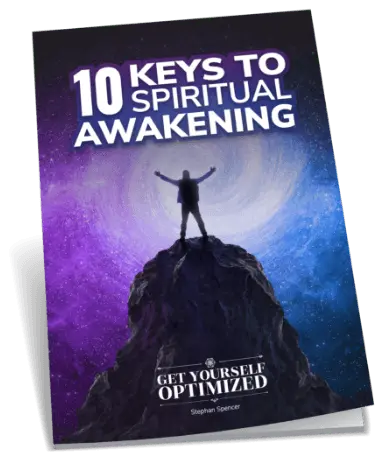In this Episode
- [01:49]Mick talks about how his motto of “help one to help many” unfolds for him, and describes the purpose of Not Impossible.
- [03:18]We learn how Mick got started helping Tempt One by creating the EyeWriter.
- [07:21]Stephan responds to what Mick has been saying by talking about the importance of making a commitment, even if you haven’t yet figured out exactly how you’re going to reach that goal.
- [08:59]What inspired Mick to open-source the technology for the EyeWriter?
- [10:27]Mick shares another success story from Not Impossible, this time involving a young boy who had lost both of his arms in a bombing in Sudan.
- [14:04]We hear about Mick’s concept of “beautiful, limitless naivete.” Stephan then talks about his experience on a board of a nonprofit that builds schools in Zambia.
- [15:50]How many people is Project Daniel outfitting with prosthetic arms?
- [17:25]Mick talks about another recent project, which is helping deaf people hear through skin sensations. He also discusses how he got started working on this particular topic.
- [20:28]Mick explains what the maker movement is.
- [23:26]Does Mick have any plans to take Build Not Impossible and its curriculum to other schools and areas?
- [25:01]If your kid shows an interest in maker-related topics, there are lots of ways to support her or him, Mick explains.
- [26:21]Another project that Mick is currently working on is Hunger: Not Impossible. He discusses how the program is designed to help people find local solutions to hunger.
- [29:03]Mick funds these projects by working with brands, which come on board to sponsor the projects.
- [29:59]Don’s Voice, another of Mick’s projects, allowed a paralyzed man to move his eyes to communicate with his family.
- [31:52]The technology for Don’s Voice is also open-source despite being a little more complicated than the EyeWriter.
- [33:30]Mick doesn’t have any degrees or diplomas, he explains, pointing out that being driven to do something is more important than degrees. Stephan then talks about the importance of desire, and the ability each of us has to make a big impact in the world.
- [37:39]Mick sees Not Impossible as a movement, and is passionate about reminding people that they can do amazing things.
- [39:51]We hear more about technology for the sake of humanity, which underpins a lot of what Mick does.
- [42:23]How could someone reach out if they want to learn more, help his organization, or get in touch?
Mick, it’s great to have you on the show.
Hey. Thank you so much.
I’d love to start by just letting our audience understand your motivation for making such a huge difference in the world for people. You start with helping one person and you’ve got this motto, “Help one, help many.” How does this kind of unfold for you? You see something in the newspaper, you hear somebody speak and it inspires you to help a certain person, how does this all unfold?
Well, for us, the whole purpose of Not Impossible came out of just being exposed to things that we saw that we considered to be just injustices. Things that we thought like, “That shouldn’t be that way,” “That’s not right.” And then what we do is in recognizing those things that we consider that needed to be changed, and typically tend to stray in the health or wellbeing space, and then we just set a course to try and to change them. It’s what we call “commit and figure it out.” Our process is that you see what we call absurdities, these things that just shouldn’t be that way, this has to change, something’s moved within us. Be it someone that we know, or just a story of it, just moves us so it’s like we’re gonna figure this out, then we start going to that process. And then the focus point for us is we don’t try to solve these problems for the whole world, we don’t try to boil the ocean. What we do first is we try to craft a solution that helps one person, and then in helping that one person, it has the potential to help many people after.
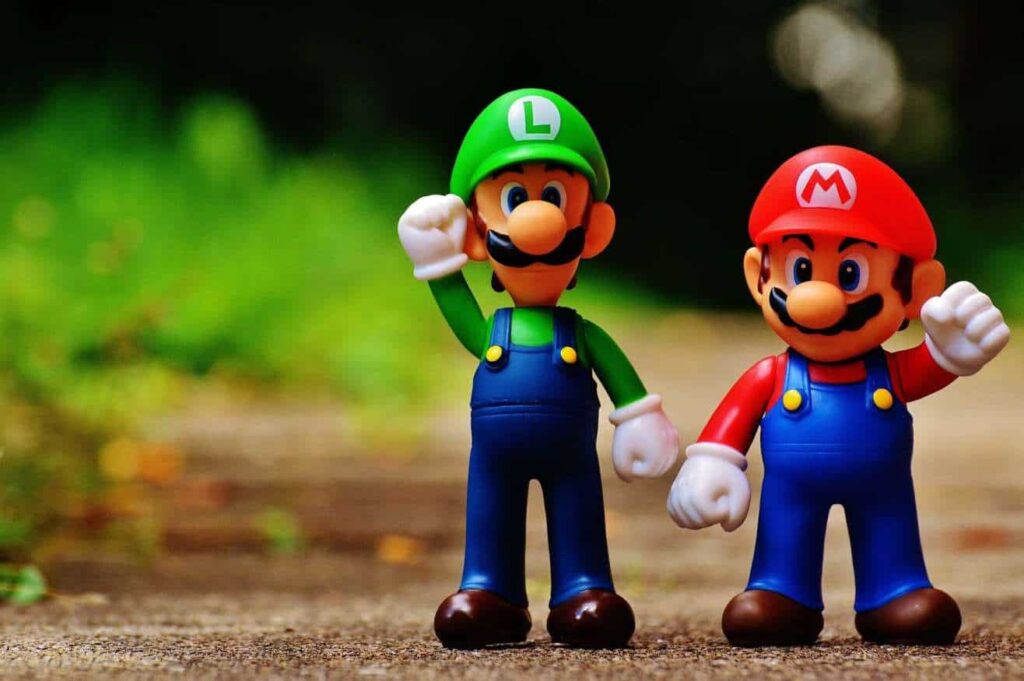
Yeah. This started for you with The Eyewriter. Could you describe where you heard about Tempt, the guy that you wanted to help with this technology, and how that came about because it started I guess not as a project to build technology to help him but just you were inspired to donate some money?
Right. This started with the fact that we got invited in an accidental way. It came about that we were invited to this fundraising event, we didn’t know it was a fundraiser. We got there, we were exposed to this artist, this paralyzed artist. The out point of support at this fundraiser, we were just really blown away by. We went back, and we went home after, we went home afterward, my wife and I. Then, Christmas time rolled around and we decided instead of giving our clients, our production company at the time, giving our clients a gift, why don’t we make a donation on behalf of them to a charity? Great idea, not the most original idea, but a good idea, heartfelt. My wife said, “Why don’t we do it for that paralyzed artist that we met back in spring?” That’s what we did. And then in sitting down with his father and brother, once we had sent out all the gifts and collected the money, we said, “What are you gonna use the money for?” They said, “We just want to talk to our son or our brother again.” And that was the first time I was exposed to this concept that people who have these [00:03:45] syndromes don’t have an ability to talk, don’t have an ability to communicate, and we said, “God, that just doesn’t seem right.” We decided right there and then on the spot, like okay, why don’t we figure out… I called him the Stephen Hawking machine. I said if Stephen Hawking’s got one of these things, then you guys should have one. We said let’s get you one of those Stephen Hawking machines. We set a course and that was just a question of being persistent and not being bullied by the insurance companies. We eventually got him a Stephen Hawking machine.
But then we also said at that breakfast, we said, “Why don’t we figure out a way to actually make it so that your brother can draw again? Maybe there’s a way for him.” I know these Stephen Hawking machines where the people move their eyes and the robot talks, why don’t we make it so he moves his eyes and then the cursor moves across the screen and that could be a way that he could draw again. He got all excited and then they left, and as soon as they left I went, “Oh my God, what did I just commit to?” I had no business committing to that, and that’s part of our process, such as commit and figure it out. That’s what we did, we just started to kick over rocks, and network, and talk to people. Lo and behold, probably about a year later after creating this crazy team of just brilliant people, on a dark and stormy night in Los Angeles, from his hospital room, this paralyzed artist named Tony Tempt One with a computer in his room, we just connected a wireless stick to a projector down in his parking lot, projecting this massive image against the side of a building, this paralyzed artist drew again for the first time in seven years, and it was just awesome, it was an awesome experience. That was essentially the start of Not Impossible, because it was such an incredible experience for us to go through that, and then we went home and then we started contemplating should we do this, should we not do this? That concept of doing things that were impossible, trying to make them not impossible, something that really stuck with me.
That concept of doing things that were impossible, trying to make them not impossible, something that really stuck with me.
And then all of a sudden all of these press and accolades started flowing in, we had Time Magazine’s Top 50 Inventions, all of these interviews and Ted Talks, and crazy things happening and we were like, “What the heck just happened?” We realized, we’re like, “Maybe this is something that we should continue.” I decided not to continue. I said, “You know we got lucky, it was cool, let’s keep working on it for Tempt but you know, let’s just go back to our day jobs. Right about that time, Tempt sent us an email and he said, “That was the first time I’ve drawn anything for seven years. I feel like I’ve been held underwater, and someone finally reached out and pulled my head up so I can take a breath.” The seed was planted on that night that Tempt drew, but on that moment when we got that email we’re like, “Alright, we don’t have a choice, we have to do this, and we have to keep figuring out how to make and hack and engineer things to help people.” That’s kind of the birthday of Not Impossible.
Amazing. This idea of making this declaration, not knowing how you’re gonna do it but just saying, “I’m committing.”
Right.
There’s a name for that, it’s called a forcing function, at least that’s according to Aaron Ross, I don’t know if you know who Aaron Ross is but he wrote a book called From Impossible to Inevitable. The big difference between saying, “I wanna lose some weight so I’m gonna go join the gym,” or “I wanna lose some weight so I’m going to declare publicly to all my friends on Facebook that I’m committing to running the L.A. Marathon next year,” big difference. The second one is where you’re gonna end up making the difference for your audience, making that major shift. That’s exactly what you did with committing to Tempt that I’m gonna build you a machine that will allow you to draw again. Pretty incredible.
Absolutely.
Incidentally, for listeners, the Aaron Ross episode where we talked about going from impossible to inevitable and how that would unfold for your business is on my other show, Marketing Speak, Episode 30, so definitely check that out. One thing, Mick, that really intrigues me about this particular technology that you developed for Tempt, the EyeWriter, is that you open-sourced the code for that so that other people could contribute to it and take it over and do different things with it, use it for other kinds of use cases, and so forth. What inspired you to open source this technology?
Mostly because we don’t believe that technology like this that changes people’s lives should be governed by whether they have insurance or can afford something. We really wanted them to make something accessible. We felt like at that moment that open source was the best way for us to go about doing that.
Yeah. It’s so ironic that the person who coined the term open source, Christine Peterson, was actually one of my early guests on this show.
Well, nice.
Yeah. Open source has really been a foundational concept for the building of the internet and all sorts of other technologies. Do you know of any use cases where somebody took the EyeWriter and used it for something quite different?
No. We know that people were using it and modifying it and changing it to work for themselves. We have some pretty funny stories about people using it to play video games for their paralyzed brother or sister. But we don’t know of anybody taking it and really modding it beyond what those cases that we know.
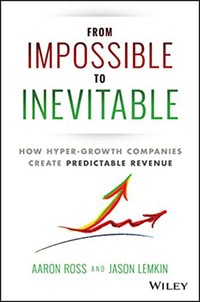
Got it. Then, after creating this EyeWriter, you didn’t stop there, you created more technologies. There’s Project Daniel where you, I guess, saw an article about a boy with his arms missing from a bomb that went off or some sort of war situation in Africa?
Yeah. Not Impossible was cruising along and things were… We were figuring things out as we went. Eventually, we started to try some things and failed on some things, all along, all the while my production company was still going. Then, I read a story about a young boy who had both of his arms blown off in a bombing in Sudan. The story of this young boy named Daniel, and the story of the doctor who took care of him was Doctor Tom Catena, and just all the circumstances around it were just such that I couldn’t just forget the story. The part that got me the most is when this Doctor Tom, he’s an incredibly passionate doctor, after he saved this boy and this little boy woke up, the thing that boy said was this, “If I could die, I would. Because now, I’m gonna be such a burden to my family.” And to me, I couldn’t really fathom this concept of a young boy wanting to be dead just so they’re not a pain to their mom and dad. I have kids and I couldn’t fathom that, so I said, “Alright. I don’t know how, I don’t know what, but we’re gonna try to fix this and try to do something about it.”
That set a course on trying to solve this and a little faster timeframe because I read that story on July 11th, and after putting the pedal, the metal, and starting to network and kind of go through this process, on November 11th come hell and high water, and every obstacle that you could imagine. I ended up in Sudan on November 11th. We had made a low-cost 3D printed prosthetic for this young boy named Daniel that allowed him to feed himself for the first time in over two years. That was essentially the first 3D printing prosthetic club ever started and we started it in a war-torn country and in a refugee camp at first and then we moved it to a kind of a mash-like hospital.
Wow. This could have unfolded in a very different way where you’re like, “Okay, I wanna provide prosthetic arms for this boy, Daniel, and just whatever it costs we’ll fund that, he will be taken care of.”
We could have done that, but to me, that’s a supply chain issue, and for us, it was more about trying to solve this problem so that there could be a more sustainable way of working and it would be something that could continue on, and that’s why we said, “Let’s figure out how to teach them.” You know, give a man a fish versus teach a man to fish.
Yeah. It wasn’t just about building this in a low-cost way so that it’s more sustainable, but you wanted to train others in Sudan to create more of these. This is a pretty widespread problem apparently with limbs getting blown off from bombs.
Absolutely, yeah. The amputees and amputations are something that happens all around the world from landmines and bombs and also just poor medical attention. Giving these people who are typically people coming from an agrarian way of living and our people work with their limbs to fish or to hunt or to plow the fields. It’s a question of life or death, of giving them an ability to continue to sustain their own livelihood. The importance of it was definitely accentuated.
And yet these people in Sudan probably have never operated a computer or any real technology before, right?
Correct. They’ve seen laptops but they’ve never operated 3D printers and laptops together to make a prosthetic, that’s for sure.
You had to train them on how to operate this thing and build an arm or a leg or…
Well, we only did arms. The great thing about this is that… One of the things that I write about in my book is… We can do a book plug, right? Not Impossible, it’s this concept of beautiful, limitless, naivety. When people don’t know what they’re not supposed to be able to do, they usually can do things. In our experience, there are fewer inhibitions on, “Oh, I must be doing it the wrong way. I gotta do it a different way.” The same thing with the people that we taught is that they just wanted to come up with the solution. There was this newness to what they were doing and this vibrance and freshness to their approach. They just gobbled this up, they were like a piranha, just attacking meat in terms of figuring out how to build these things and try it again and it was a wonderful environment to teach in, for sure.
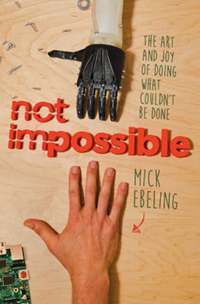
Wow, very cool. I’m actually on a board of a non-profit to build schools in Zambia and they use technology to teach these kids. They have an e-learning curriculum and the kids use tablets, and because these schools, they don’t have any electricity, so they actually install solar energy to set up the building with electricity so that the teacher can instruct using a projector and the kids can be using tablets and recharge those as they need them.
That’s so cool. I love that.
Yeah. That’s Impact Network. They’re doing some really great things in Zambia.
Very cool.
Yeah. We have Project Daniel which now is outfitting how many people with prosthetic arms, would you guess?
One of the things that we learned from this, for a while, we had a good clip. We were, for a while, we were doing about an arm a week. Then there was a bit of atrophy that took place in terms of the team that we taught… people. It was a finite group of people who we taught how to do it. Our self-sustainable solution that was very sustainable at first started to dwindle. What we’re working on right now is, especially when you’re punk rock hackers and makers and engineers, you’re not very precious about your solution. It’s not about, “Oh this is the solution that must work.” What we ended up doing was going out and creating what’s now called a Prosthetic in a Box which is a simple do-it-yourself, almost Ikea desk type of solution where you open the box, you plug everything together based on the manual or the instruction you have in front of you, but it requires no electricity, and no 3D printing. Just some simple tools like you’re putting together an Ikea desk. One of the things that we’re really excited about is we did a test about a year ago in Sudan on this, and we’re in the development phase, the next phase of it right now. We’re really excited to get it out there because we could just ship these things off and you open them up and you don’t need to be properly trained, you can just paint by numbers, so we’re really excited about that.
Wow. That’s ironic that you’re going from high-tech to low-tech. It usually goes the other way around.
Yup.
Okay, cool. Now, you’ve got that project going. You’re working on some other things though too. You’ve got another project where you’re helping the deaf hear through skin sensations.
Yeah. One of the things that we created was, and again, it all starts with the absurdity. The absurdity looking at how the deaf experience music which is just to receive vibrations against their skin. And we said, “Well, what if there was a way for us to change how they receive the vibrations? Rather than receiving the vibrations through their ears, and then that gets projected and transported to the brain, what if we figure out a way for them to receive the vibrations through their skin, and that’s how it gets to the brain?” Because you don’t hear with your ears, or see with your eyes, or smell with your nose, those are the vehicles that give that signal to the brain. We’re figuring out, “Alright, how do we get to the brain just not through eardrums that aren’t working?” We created a wearable technology that uses wristbands, ankle bands, and a wearable vest that takes the music signal, breaks up into its different parts and projects it on different parts of the body so the person could actually feel the guitar or the drums or the tambourine or the vocals or the bass in very specific parts of their body, it provides a more acute understanding of the song, and then that gets transported to the brain. The deaf community has loved it, they really, really love it, and so we’re really excited about that and what that’s gonna mean as it unfolds.
Very cool. I saw one of the videos and I recognized this lady that you were working with as this deaf person who is a singer. Then I’m like, “I know who that is, I don’t know her name but she was on one of the shows like The Voice or…”
America’s Got Talent.
America’s Got Talent, that’s what it was.
Yeah, yeah.
What’s her name?
Mandy Harvey. Incredible performer. You can see on our Instagram, you can see some footage of her. I gave a huge presentation, there were about 18,000 kids in Indianapolis and we did a surprise performance when she came on stage and did a performance which is really incredible.
Wow. How cool. 18,000 people in the audience…
Yeah. It was awesome.
Were these all kids or a mix of kids and adults?
Yeah, it was mostly kids. It was for Future Farmers of America that day. There was a national convention and it was just awesome.
Wow! How did she end up getting hooked up with Mandy to help her with being able to hear through her skin?
We met through a mutual friend named Erik Weihenmayer, who is an incredible human being, incredible human being, he has climbed all seven summits and kayaked the Grand Canyon and he’s blind.
Wow.
Yeah, he’s an incredible human being.
Okay.
Erik Weihenmayer, absolutely.
The Maker Movement started off as something that’s trivial or unique.
Okay. Very cool. This idea of putting on wristbands to help you hear if you’re deaf, you’re hearing the music through the sensations. This idea of inventing stuff that doesn’t exist and trying to solve what seems to be impossible problems, there’s a movement called The Maker Movement that probably a lot of our listeners are not familiar with. Could you describe what the Maker Movement is, what Makers are, and how that fits into the bigger picture?
Sure. The Maker Movement, it’s funny because the Maker Movement now is, like most things, it starts off as something that’s trivial or unique. Now, I think it’s become more of just a way that people are and behave. Now that we have these tools of fabrication that are at our disposal, people are able to make stuff that they want for themselves. It’s not just being wood-working and things like that that are traditional, but look at making more complex things and more things using 3D printers and different fabrication tools to solve problems or create solutions where they need them.
Yeah. There are whole conferences, and meet up groups of makers that get together, and make all sorts of cool stuff.
Yup.
What would be the big Maker conventions or conferences?
There’s a lot. Maker Faire’s kind of grand poobah. That’s the biggest one.
Faire. F-A-I-R-E?
Correct, yeah.
Yeah. I know that you guys had a project where you were helping kids learn how to become makers in different, war-torn or impoverished parts of the world.
We have a project called Build Not Impossible that we took a lot of the learnings that we had from what we did when we were at project Daniel, and then again when we went back last year. To inject this learning around exposing people to technology, and then watching them just flourish. We’ve created a curriculum to expose kids in refugee camps to technology maker, hacker, engineering, basic engineering that they could create solutions that could help their quality of life.
You did this in a big refuge area, Yida, right?
Correct.
Why did you pick Yida?
Because we knew it. We had come there, that’s where I had made Daniel’s arm. It was an easy thing for us, we were familiar with the actual area. The Nubian people, they’re just incredibly gracious, loving, warm, just happy people. They have every reason in the world to be miserable. They’ve been displaced. Their relatives have been killed by President Bashir. They’ve been driven out of their homes. There’s every reason for them to be cranky and grouchy. Far bigger reason than your Starbucks Coffee isn’t hot enough. We were just really taken by that. It was a logical step for us to go back and launch Build Not Impossible in that refugee camp.
Yeah. How many thousands of people are in Yida?
At that time I was there, it was 70,000 people and growing.
Wow. I can’t even fathom that.
Isn’t that crazy?
If you can figure out how to do it there, then it could be easily done in other places.
Yeah. Any plans to take Build Not Impossible and its curriculum and circulate it out to other schools and areas?
We would love to, it’s really just a question of resources and bandwidth at this point but we believe that we’ve created a curriculum and a process that could be easily syndicated and we would love to have that kind of be taken out, deployed in other places. For us, we saw this as a way to deploy a pilot that kind of passes that you could do it there, you can do it anywhere. We did it in one of the harshest regions and environments in the world. If you can figure out how to do it there, then it could be easily done in other places.
Yeah. I’m thinking with Impact Network and what they’re doing in Zambia with all these schools in Rural Zambia, we got 30 schools and they’re building a lot more. This could be a really cool addition to their curriculum.
Absolutely, absolutely!
Yeah. I’ll put you in touch with them.
Great.
Cool. Okay, this idea of becoming a maker, I think is a pretty cool one, especially if you’re younger. I remember when I was a kid, I got this electronic, I don’t know, kit or something, and I was able to make resistors and things like that. Just simple stuff like radio shack kind of kit. This is the next level. This is for kids these days. What would be a good first step for a parent to get their kid into this whole world, because there are some sort of online, I don’t know, curriculum, training, or some YouTube videos, or maybe there’s a place that is local to them, in different parts of their country. Kind of like future farmers of America but for makers?
Yeah. I think it’s one of those things where if your kid shows that kind of interest, then it’s not hard to start kicking over rocks and seeing the types of things that are out there. There are lots of maker spaces out there, there’s Robotics Clubs, there are things that you can order online that really can start to develop people’s interest around that, lots of maker toys. You can go there, the website is called Spark Fun and Aid a Fruit that are gonna make your ordering hubs that you can get a lot of starter kits there. I think it’s just really following if your kid’s interested in one thing, then I guess the job of the parent is to continue to expose them to those types of things. I think it’s just a question about pursuit, but those are the best ways that I see.
Yeah. I know there’s a program for kids. It’s a leadership program – Leap Foundation. Are you familiar with that?
I’ve heard of it.
Yeah. That could be something where young people, maybe there’s some sort of collaboration in there. Between getting these kids to learn leadership skills and so forth from Leap, and then they also learn about there is this whole Maker movement that could build really cool stuff and change the world in that way too.
Yeah, absolutely.
It’s just really following if your kid’s interested in one thing, then I guess the job of the parent is to continue to expose them to those types of things. Share on XWhat are some other projects that are in the works that you can publicly talk about?
The other thing I would talk about, we’ve got lots of things that are behind-the-scenes right now. The other thing that we’re working on is Hunger Not Impossible, which is the absurdity that we saw when hunger was this concept that… You’ve heard this before, is that people are going hungry yet it’s not due to a lack of food but it’s due to a lack of access to food. We said, “Bugger that. That’s ridiculous.” You can’t say that out loud in front of the mirror and actually be able to keep a straight face, that just doesn’t seem right. We set a course on trying to change that and create a supply chain solution. What we learned was that most people who come from a food and secure environment, and by the way, that’s close to 15 million Americans. One in three people who are homeless are veterans, one in five kids come from a food-insecure home, we learned that most people who come from insecure homes, this is statistically, possess a cell phone. If you give a kid an option between food, clothing, shelter, or a cell phone, they’re gonna choose the cell phone because it’s the great equalizer. We’ve created now a cloud-based solution that allows people with cell phones to be texted or to receive texts and/or have, you know, we’re gonna develop the app into one to receive information about where they can go get fed that’s geo-approximate to them.
So why is that important? Because if you’re going to school, you can’t get on a bus and then transfer to another bus to try to go get your lunch. You’re gonna go out, get fed, and get back to lunch, go back to school. The same thing with the job, you’re gonna take your lunch break, go and get fed, and get back to your work. Because a lot of people who live in food-insecure environments are not homeless, that’s the stereotypical homeless whino type of thing. This creates a solution for them to actually be fed that’s close to them. They benefit, they are then claiming these meals in a dignified way, they’re not identified as homeless, they’re just identified like anybody else, whether if you go claiming a meal in a restaurant that was ordered online because it’s all done online. We’re really excited about this, we think this can make a cataclysmic change. If you think about it, the concept of some of our root problems, crime or anything that you can think of, the origin of people kind of getting off on the wrong path, when you use food, when food is taken out of the equation as a variable and made a constant, it changes their whole perspective on life. You can’t think about going to school or getting a job or not doing drugs or any of those things if you’re hungry all the time, it just doesn’t work. We’re really excited about this.
Wow. Did you have any sponsors that are helping you with that or how do you fund these things, because these things can be expensive, right?
We do. Yeah, very much so. We work with brands. Brands work with us and we tell the stories around the things that we’re doing and then the brands will actually come on board and sponsor and actually are able to get tagged on that content and then promote that across all their channels. I come from an advertising and marketing background so that’s my secret sauce, that’s what I know. I know how to create content that moves people, and around brands. That’s essentially what we’re doing.
Okay. And with these other projects like the EyeWriter, and Project Daniel and so forth, you got corporate sponsors to fund each of those projects, right?
Correct. We had Intel fund Project Daniel. We had HP fund Don’s Voice, Levi’s funded kind of after the fact that we helped to fund the EyeWriter. We have different brands that come in along the way.
Okay. Did we talk about Don’s Voice? I don’t know that we did.
Don’s Voice was something you could see at notimpossible.com. It’s a solution that we created. It was a voice modulated that allowed someone to use a paralyzed man to move his eyes and control a keyboard, similar to the expensive machine that we got for Tempt but we made it a much less expensive machine, and it allowed this man to, on his 25th wedding anniversary, speak to his wife and say the words I love you which is really a beautiful, beautiful story. You can see that, actually, go to Don’s Voice on our website.
Okay. I watched that video. It was really, really touching, this guy hadn’t been able to move anything but his face, but he couldn’t speak because of the tube in his throat, in order to breathe. That’s a common problem I guess, when you have a breathing tube, and you can’t speak so you just basically have to use your eyes. If you’re paralyzed, you can’t use your arms or fingers or anything to write. That’s the only way that you can communicate is through your eyes, essentially.
Exactly.
How long did this technology take you to develop?
The team that was working on it kind of had to wait for a while. It was a very rudimentary solution but the fact that it allowed him to say the words I love you, that was the main point. That was the mission accomplished.
And then he continues to thrive in being able to communicate…
Yeah. We’ve lost touch with him for a while. We touch base with him every holiday but he seems to be doing great, his wife and kids are just down to earth people, incredible people. It’s great because right about now I’m doing this podcast with you in November, it’s coming time for us to reach back out again and talk to his family.
Cool. This technology was open source as well, right?
We put it out there, yeah. We put it out there for people to be able to hack though it’s a little more complicated. It didn’t have the viral risk nature that the EyeWriter had because EyeWriter was a little simpler, but it definitely was put out there for people to make for themselves.
Amazing, cool. Let’s talk about the feasibility of this idea that instead of just writing a check to make a donation somewhere, that you get your hands dirty, and you create something and you make a change in the world. You help one, and thus, help many. I’m guessing that some of our listeners are thinking to themselves, “Well, that’s easy for Mick to do because he probably had a lot of money. He could start a foundation and he could start some major project or initiative because he probably sold a company or something, I just work for a living. It’s all I can do to just write out a check every month to whatever non-profit.” What do you tell people? I think that they can make a huge difference and we all have that capability. Abraham Hicks says, “The power to create worlds is within each one of us.” Just imagine that. The power to create worlds, not just to make a difference in the world, but the power to create worlds, that power is within us. What would you tell somebody who is skeptical about making a difference like this, like you’ve done?
It’s really a question of how motivated you are to do it far less that you have a degree or diplomas, it’s far more about the fact that you’re driven to actually do it.
I don’t have any degrees or diplomas. There’s no reason for me to have been able to do any of the things that I’m doing. It’s really a question of how motivated you are to do it far less that you have a degree or diplomas, it’s far more about the fact that you’re driven to actually do it.
Yeah. In Kabbalah which is something I’ve been studying for a couple of years now, and actually one of the episodes of this podcast was just my Kabbalah teacher Yehuda Ashkenazi, we talked about desire of being the engine for everything that you do. If you don’t have the desire, instead of praying for the magical appearance of all your wishes to be manifested, why not pray for more desire? “Okay, I wanna make a million dollars, please can I have a million dollars?” No, how about you pray for the desire to manifest those million dollars?
That’s great.
If you have the desire like you did to make a massive difference for people and create something that is scalable and can be shared with the world through open source and through inexpensive IKEA type technology and parts that can be assembled by anybody. I think that, hopefully, some people will be inspired by this hearing and say, “You know, I’ve been thinking about some project or something that I could make a difference with,” and just get out there and do it. When I started exploring the idea of building schools and orphanages in Africa, I quickly found that in order to build things like a school or an orphanage, a lot of times the government is corrupt and you have to bribe government officials and stuff to get anything done. You have to have a man or a woman on the ground to make sure things happen, if the stuff isn’t stolen right under your nose and so forth. I decided to partner with Impact Network. They already had the infrastructure in place there, they already built 9 schools and I funded the 10th school. Okay, well, writing a check out for a whole school to be built, and then to operate for the first year, too, that was a chunk of money, it was less than I thought it would be. It was like $20,000 to build a school and operate it for a year, under $20,000. That’s cheaper than a car, it was pretty surprising for me.
But then I started to get more involved and to be part of their board and participate in their marketing and help them reach more people through the internet and so forth. We all have the capability to make a huge impact. For you, I think it was just where you met Tempt, and you were inspired to do something big for this person, for that artist. For me, they’re like, this is over a decade ago now, well over a decade now. I listened to an interview of President Jimmy Carter on Sky Radio, I was on an airplane. I’m like, “Wow, this guy is amazing. He’s done such incredible things for people in Africa like helping with the eradication of guinea worm disease, and helping make sure that the elections are not stolen,” and things like that. I contacted the Carter center and offered to help them with their online marketing, and with their SEO, and getting more visibility out there through the internet. They took me up on the offer and President Carter actually started blogging. He was the first ex-president to start blogging because of me. You can make a difference. It all starts with making a phone call, I think. Is there anything else you wanna share with our listeners about making a difference like any tools or resources that you would recommend other than create that desire?
The thing about Not Impossible, we really see Not Impossible as a movement, and because we see ourselves as a movement, it’s about just reminding people that they can go out and do the things that we’re doing. It’s just believing, or having been motivated as you said, having that desire of why something needs to change, why absurdity needs to change. My kind of closing message around the work that we’re doing in Not Impossible is if you see something that is absurd, do not say to yourself I’m not qualified or I don’t have the right degrees or diplomas or credentials or experience. If you see something that’s absurd that you feel, as a human being, has to change, just go change it. Start to unite people around you, and start to kick over rocks, and figure out who these people are gonna be that you need to help you, and watch what happens. Watch out things just light up for you. It’s an incredible experience.
Yeah. There’s this definition of responsibility which is being cause and the matter. I learned this from Landmark Education, Landmark Forum.
Yeah.
Responsibility is being cause and the matter. It’s not about blame, it’s not about duty, or obligation. It’s not about getting credit. It’s about just being cause and the matter because if it’s not you, then who, and if it’s not now, then when?
Responsibility is being cause and the matter. It’s not about blame, duty, obligation or getting credit.
Yup.
You see something that’s broken or that is absurd, you change it because if not you, then who? And if not now, then when?
Yeah. That’s actually the final thing that I say in my very first Ted Talk. As you can see online, if you go to Ted, “If not now, when? And if not me, who?” In fact, I’m actually staring at a sign in my web during this podcast with you right now that’s hanging in my room that says those words and so I couldn’t agree more.
Wow. That’s cool.
Yeah.
That’s cool. You have another thing that you say, “Technology for the sake of humanity.” Tell me a little bit about that because, “technology for the sake of technology,” you hear that all the time because people throw that around as a wasteful use of technology. Because we can do it, we did it. But, “technology for the sake of humanity,” that’s kind of an underpinning of a lot of what you do.
Absolutely. That’s stenciled in our office as you come in the door, looking at what needs to be solved and then using technology to solve it, that’s what “technology for the sake of humanity” means.
Is that a phrase that you came up with on your own or did you read that from a quote or something?
No. It’s just one of those things that evolved out of our company. There was a friend of mine, actually, the origin of it is a friend of mine. His name’s Steve Chavez, said it once and I said, “Oh my God. That’s just a perfect articulation of what we do,” and he said, “Go for it. Take it.”
It’s yours.
Yeah.
Alright. Any last resources, tools, or suggestions for next steps for our listeners in terms of playing with technology and in becoming a maker, anything like for example, do you think people should get a 3D printer and start playing with it?
You know, I think it’s one of the things where you don’t have to go out and make these huge investments and things. There are places you can go, the way you can learn, Makerspaces and the maker community is really helpful, and they love to bring people in and show them the ropes. You don’t have to go out and drop $3,000 on a top-of-the-line 3D printer. You can go and do it in different places, a lot of libraries have them as well. But for me, it’s not even about being a maker, it’s about being a doer. It’s actually going out and seeing something that needs to be done and then just doing it, just solving that problem, and it’s by any means necessary. The resources for that are just don’t shy away when you see something that you think is absurd, don’t shy away from it. If it moves you enough to where you can’t stop thinking about it, then just commit to figuring out how you’re gonna solve it and then just go do it.
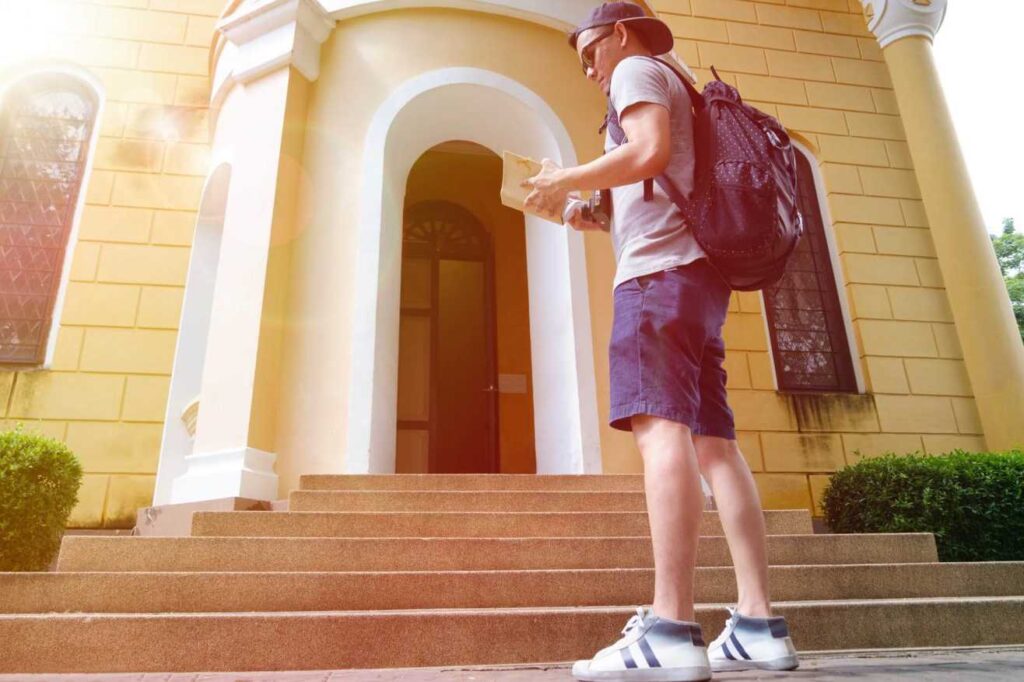
Yeah. The Maker Spaces, there’s actually a website called makerspace.com where you can find these different maker spaces to play in, where you don’t have to, as you say, spend $3,000 to buy your own 3D printer. You can actually find spaces where you can do biotech stuff too, like genome sequencing, and do assays and all sorts of stuff.
Yeah.
Cool.
It’s a pretty amazing world we live in. That’s for sure.
Yeah, it is. It’s getting faster and faster in terms of the accelerating pace of technology.
Yup.
Yeah. Alright, cool. If somebody wanted to contact you to maybe speak at a conference or convention or if anyone wanted to help your organization continue to make a difference, how would they reach out?
You can reach out, go to notimpossible.com. For any speaking inquiries, there’s a link, it’s sp******@***************bs.com, in**@***************bs.com, but we’re pretty easy to get a hold of. If there’s something that you wanna reach out to us about, then we check and receive everything.
notimpossible.com is the site for learning about the projects, and your words, and to read your blog, right? notimpossiblelabs.com, what’s that website?
That’s just the email address, notimpossiblelabs. notimpossible is the website, and notimpossiblelabs is the email.
Alright, so if you email, what were the two emails again?
You can do everything to in**@***************bs.com. That’s the easiest way to do it. And if it’s a speaking inquiry, it’s just speaking.
Got it. Thanks, everyone, for listening. Thank you, Mick, for joining us and sharing all of the inspiring stuff that you’re working on. I’m inspired to make a bigger difference in the world, and I bet a lot of our listeners are too.
Thank you so much for having me on.
Alright. Thank you, and catch you next time on the next episode of Get Yourself Optimized, this is your host, Stephan Spencer, signing off.
Important Links
Connect with Mick Ebeling
Organizations/Companies
People
Books
Article
Previous Get Yourself Optimized Episode
Previous Marketing Speak Episode

